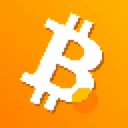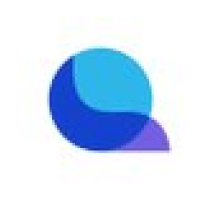Bitget:全球日交易量排名前 4!
BTC 市占率62.02%
Bitget 新幣上架 : Pi
BTC/USDT$103428.16 (+0.35%)恐懼與貪婪指數70(貪婪)
山寨季指數:0(比特幣季)
比特幣現貨 ETF 總淨流量:+$321.4M(1 天);+$2.02B(7 天)。Bitget 新用戶立享 6,200 USDT 歡迎禮包!立即領取
到 Bitget App 隨時隨地輕鬆交易!立即下載
Bitget:全球日交易量排名前 4!
BTC 市占率62.02%
Bitget 新幣上架 : Pi
BTC/USDT$103428.16 (+0.35%)恐懼與貪婪指數70(貪婪)
山寨季指數:0(比特幣季)
比特幣現貨 ETF 總淨流量:+$321.4M(1 天);+$2.02B(7 天)。Bitget 新用戶立享 6,200 USDT 歡迎禮包!立即領取
到 Bitget App 隨時隨地輕鬆交易!立即下載
Bitget:全球日交易量排名前 4!
BTC 市占率62.02%
Bitget 新幣上架 : Pi
BTC/USDT$103428.16 (+0.35%)恐懼與貪婪指數70(貪婪)
山寨季指數:0(比特幣季)
比特幣現貨 ETF 總淨流量:+$321.4M(1 天);+$2.02B(7 天)。Bitget 新用戶立享 6,200 USDT 歡迎禮包!立即領取
到 Bitget App 隨時隨地輕鬆交易!立即下載



Mint Club V1 價格MINT
未上架
報價幣種:
TWD
數據來源於第三方提供商。本頁面和提供的資訊不為任何特定的加密貨幣提供背書。想要交易已上架幣種? 點擊此處
NT$0.0001097+18.41%1D
價格圖表
Mint Club V1價格走勢圖 (MINT/TWD)
最近更新時間 2025-05-10 17:33:01(UTC+0)
市值:NT$114,238,253.23
完全稀釋市值:NT$114,238,253.23
24 小時交易額:NT$10,552.2
24 小時交易額/市值:0.00%
24 小時最高價:NT$0.0001107
24 小時最低價:NT$0.{4}9303
歷史最高價:NT$0.003336
歷史最低價:NT$0.{4}3186
流通量:1,041,314,400,000 MINT
總發行量:
1,149,363,840,000MINT
流通率:90.00%
最大發行量:
--MINT
以 BTC 計價:0.{10}3505 BTC
以 ETH 計價:0.{8}1460 ETH
以 BTC 市值計價:
NT$59.71
以 ETH 市值計價:
NT$8.71
合約:
0x1f3A...5FC5915(BNB Smart Chain (BEP20))
更多
您今天對 Mint Club V1 感覺如何?
注意:此資訊僅供參考。
Mint Club V1 (MINT) 簡介
内容提示:以下为关于加密货币 Mint Club 的简洁信息和相关介绍。
Mint Club 是一种加密货币,它具有出色的特点和功能,为用户提供了独特的交易和投资体验。
首先,Mint Club 基于区块链技术。区块链是一种分布式账本技术,可以确保交易的透明性、安全性和可追溯性。这意味着使用 Mint Club 进行交易时,您可以放心地知道您的交易记录将被安全保存,并且不容易被篡改。
其次,Mint Club 提供了快速和低成本的交易。由于采用了高效的区块链技术,使用 Mint Club 进行交易时,您不需要等待长时间才能完成交易。同时,与传统金融机构相比,Mint Club 的交易费用很低,能够帮助用户节省成本。
此外,Mint Club 还提供了隐私保护功能。您可以使用 Mint Club 进行匿名交易,确保您的个人信息和交易细节不会被泄露。这为那些注重隐私的用户提供了额外的安全保障。
最后,Mint Club 具有良好的可扩展性和生态系统。它为开发者提供了友好的开发环境和工具,使他们能够构建基于 Mint Club 的应用程序和智能合约。这为社区成员和创新者提供了一个更广阔的发展平台。
总的来说,Mint Club 是一种具有强大功能和独特特点的加密货币。它使用先进的区块链技术提供了安全、快速和低成本的交易体验,并保护用户的隐私。通过其健康的生态系统和开发者友好的环境,Mint Club 为用户提供了一个多元化的加密货币交易平台。
Mint Club V1 的 AI 分析報告
今日加密市場熱點查看報告
今日Mint Club V1即時價格TWD
今日 Mint Club V1 即時價格為 NT$0.0001097 TWD,目前市值為 NT$114.24M。過去 24 小時內,Mint Club V1 價格漲幅為 18.41%,24 小時交易量為 NT$10,552.2。MINT/TWD(Mint Club V1 兌換 TWD)兌換率即時更新。
Mint Club V1價格歷史(TWD)
過去一年,Mint Club V1價格上漲了 -20.69%。在此期間,兌TWD 的最高價格為 NT$0.0001573,兌TWD 的最低價格為 NT$0.{4}3186。
時間漲跌幅(%) 最低價
最低價 最高價
最高價 
 最低價
最低價 最高價
最高價 
24h+18.41%NT$0.{4}9303NT$0.0001107
7d+14.26%NT$0.{4}6361NT$0.0001116
30d+42.69%NT$0.{4}3186NT$0.0001505
90d+59.63%NT$0.{4}3186NT$0.0001505
1y-20.69%NT$0.{4}3186NT$0.0001573
全部時間+69.84%NT$0.{4}3186(2025-04-28, 13 天前 )NT$0.003336(2021-11-17, 3 年前 )
Mint Club V1的最高價格是多少?
Mint Club V1兌換TWD的歷史最高價(ATH)為 NT$0.003336,發生於 2021-11-17。相較於價格回撤了 96.71%。
Mint Club V1的最低價格是多少?
Mint Club V1兌換TWD的歷史最低價(ATL)為 NT$0.{4}3186,發生於 2025-04-28。相較於Mint Club V1歷史最低價,目前Mint Club V1價格上漲了 244.37%。
Mint Club V1價格預測
MINT 在 2026 的價格是多少?
根據MINT的歷史價格表現預測模型,預計MINT的價格將在 2026 達到 NT$0.0001180。
MINT 在 2031 的價格是多少?
2031,MINT的價格預計將上漲 +44.00%。 到 2031 底,預計MINT的價格將達到 NT$0.0004601,累計投資報酬率為 +321.53%。
常見問題
Mint Club V1 的目前價格是多少?
Mint Club V1 的即時價格為 NT$0(MINT/TWD),目前市值為 NT$114,238,253.23 TWD。由於加密貨幣市場全天候不間斷交易,Mint Club V1 的價格經常波動。您可以在 Bitget 上查看 Mint Club V1 的市場價格及其歷史數據。
Mint Club V1 的 24 小時交易量是多少?
在最近 24 小時內,Mint Club V1 的交易量為 NT$10,552.2。
Mint Club V1 的歷史最高價是多少?
Mint Club V1 的歷史最高價是 NT$0.003336。這個歷史最高價是 Mint Club V1 自推出以來的最高價。
我可以在 Bitget 上購買 Mint Club V1 嗎?
可以,Mint Club V1 目前在 Bitget 的中心化交易平台上可用。如需更詳細的說明,請查看我們很有幫助的 如何購買 指南。
我可以透過投資 Mint Club V1 獲得穩定的收入嗎?
當然,Bitget 推出了一個 機器人交易平台,其提供智能交易機器人,可以自動執行您的交易,幫您賺取收益。
我在哪裡能以最低的費用購買 Mint Club V1?
Bitget提供行業領先的交易費用和市場深度,以確保交易者能够從投資中獲利。 您可通過 Bitget 交易所交易。
Mint Club V1持幣分布集中度
巨鯨
投資者
散戶
Mint Club V1地址持有時長分布
長期持幣者
游資
交易者
coinInfo.name(12)即時價格表

全球Mint Club V1價格
目前Mint Club V1用其他貨幣計價是多少?最近更新時間:2025-05-10 17:33:01(UTC+0)
MINT 兌換 MXN
Mexican Peso
Mex$0MINT 兌換 GTQGuatemalan Quetzal
Q0MINT 兌換 CLPChilean Peso
CLP$0MINT 兌換 UGXUgandan Shilling
Sh0.01MINT 兌換 HNLHonduran Lempira
L0MINT 兌換 ZARSouth African Rand
R0MINT 兌換 TNDTunisian Dinar
د.ت0MINT 兌換 IQDIraqi Dinar
ع.د0MINT 兌換 TWDNew Taiwan Dollar
NT$0MINT 兌換 RSDSerbian Dinar
дин.0MINT 兌換 DOPDominican Peso
RD$0MINT 兌換 MYRMalaysian Ringgit
RM0MINT 兌換 GELGeorgian Lari
₾0MINT 兌換 UYUUruguayan Peso
$0MINT 兌換 MADMoroccan Dirham
د.م.0MINT 兌換 OMROmani Rial
ر.ع.0MINT 兌換 AZNAzerbaijani Manat
₼0MINT 兌換 KESKenyan Shilling
Sh0MINT 兌換 SEKSwedish Krona
kr0MINT 兌換 UAHUkrainian Hryvnia
₴0- 1
- 2
- 3
- 4
- 5
購買其他幣種
在哪裡可以購買加密貨幣?
影片部分 - 快速認證、快速交易

如何在 Bitget 完成身分認證以防範詐騙
1. 登入您的 Bitget 帳戶。
2. 如果您是 Bitget 的新用戶,請觀看我們的教學,以了解如何建立帳戶。
3. 將滑鼠移到您的個人頭像上,點擊「未認證」,然後點擊「認證」。
4. 選擇您簽發的國家或地區和證件類型,然後根據指示進行操作。
5. 根據您的偏好,選擇「手機認證」或「電腦認證」。
6. 填寫您的詳細資訊,提交身分證影本,並拍攝一張自拍照。
7. 提交申請後,身分認證就完成了!
加密貨幣投資(包括透過 Bitget 線上購買 Mint Club V1)具有市場風險。Bitget 為您提供購買 Mint Club V1 的簡便方式,並且盡最大努力讓用戶充分了解我們在交易所提供的每種加密貨幣。但是,我們不對您購買 Mint Club V1 可能產生的結果負責。此頁面和其包含的任何資訊均不代表對任何特定加密貨幣的背書認可,任何價格數據均採集自公開互聯網,不被視為來自Bitget的買賣要約。
Mint Club V1評級
社群的平均評分
4.4
此內容僅供參考。
Bitget 觀點
BGUSER-SS5UB921
6小時前
$OBOL COIN and Its Potential Role in Revolutionizing NFT Marketplaces
Non-Fungible Tokens (NFTs) have become a significant trend in the digital world, providing unique ownership rights over digital assets such as art, music, video clips, virtual land, and much more. As the NFT market continues to grow, its infrastructure needs to evolve. One critical area for improvement is the tokenization of transaction fees, interoperability between different blockchain networks, and decentralized marketplace governance. $OBOL COIN has the potential to play a transformative role in addressing these challenges, making it a vital asset for NFT marketplaces.
Challenges in the Current NFT Marketplace Ecosystem
The current NFT marketplace environment faces several issues that hinder its growth and adoption:
High Transaction Fees: Gas fees on popular blockchains like Ethereum can make transactions expensive, especially for smaller buyers and sellers. This creates a barrier to entry for new users in the NFT space.
Fragmentation: NFTs are often confined to specific blockchain ecosystems. Ethereum, Solana, Polygon, and other platforms have separate NFT standards and marketplaces, leading to fragmentation and a lack of interoperability.
Lack of Decentralized Governance: Many of the dominant NFT platforms operate with centralized control, which undermines the ethos of decentralization that underpins blockchain technology.
Inefficient Payment Systems: Traditional payment systems for NFTs are often cumbersome, relying on multiple token conversions or fiat gateways, which create friction for users.
$OBOL COIN’s Role in Revolutionizing NFT Marketplaces
$OBOL COIN could address many of these issues by acting as a universal token in NFT marketplaces. Below are several ways $OBOL can reshape the NFT ecosystem:
1. Unified Payment System Across Multiple Blockchains
One of the main obstacles in the NFT space is the lack of interoperability between different blockchains. NFTs are often confined to specific networks, creating silos and complicating trading across ecosystems. $OBOL COIN can serve as a cross-chain payment token, allowing users to buy, sell, and trade NFTs across multiple blockchain networks seamlessly.
Simplified Transactions: Whether an NFT is minted on Ethereum, Solana, or any other blockchain, $OBOL could be used as the standard transaction token for all cross-chain exchanges, eliminating the need for users to convert their assets into platform-specific tokens.
Increased Liquidity: $OBOL’s role as a universally accepted token can encourage liquidity by enabling a broader user base to access NFTs without worrying about network-specific token requirements.
2. Reduced Gas Fees for NFT Transactions
High transaction costs are one of the biggest pain points in NFT marketplaces, particularly on Ethereum-based platforms. By utilizing $OBOL COIN, NFT platforms could implement gas fee subsidies, where $OBOL is used to offset transaction costs. This could reduce the barriers for entry for both buyers and sellers.
Lower Fees: NFT buyers could use $OBOL to pay for transaction fees, allowing them to bypass expensive gas fees on networks like Ethereum, making NFT trading more accessible.
Micropayments: The lower transaction costs would enable smaller trades, making it viable for everyday users to trade NFTs, even at lower price points, without the heavy burden of high gas fees.
3. Decentralized Governance of NFT Marketplaces
Decentralized Autonomous Organizations (DAOs) are changing the way governance works on blockchain networks, allowing users to have a say in the decision-making processes. $OBOL COIN could be integrated into the governance structure of NFT marketplaces, empowering users to participate in:
Marketplace Decisions: Token holders could vote on key aspects of marketplace development, such as the addition of new features, listing policies, or the introduction of new collections.
Fee Structures: DAO governance via $OBOL could enable the community to decide how much transaction fees should be, ensuring that the marketplace operates in the best interest of its users.
Community-driven Curation: NFT platforms could leverage $OBOL to empower the community in curating content, creating a truly user-driven marketplace where the community's voice guides the platform’s future direction.
4. NFT Minting and Staking with $OBOL
Beyond simply being a transactional token, $OBOL could offer additional utility for NFT creators and collectors through staking mechanisms. Users can stake $OBOL to:
Mint NFTs: Instead of relying on other tokens, creators could use $OBOL to mint new NFTs, simplifying the process and eliminating the need for multiple tokens.
Earn Rewards: NFT holders and creators could receive rewards in the form of $OBOL for engaging with the platform, further incentivizing participation and encouraging a healthy, active ecosystem.
5. Integration with DeFi for NFT Liquidity and Loans
As NFTs gain popularity, the demand for liquidity solutions has also risen. DeFi platforms can be integrated into NFT marketplaces, and $OBOL COIN could play a central role in this evolution:
NFT Collateralized Loans: $OBOL could be used as collateral on decentralized lending platforms, allowing users to access liquidity without having to sell their prized NFTs.
NFT Liquidity Pools: Users could pool their NFTs and earn rewards in $OBOL, contributing to the liquidity of the marketplace while also benefiting from passive earnings.
By integrating DeFi capabilities, $OBOL could bridge the gap between traditional finance and the world of NFTs, creating an ecosystem where NFTs not only serve as collectibles but also as financial assets.
Benefits of Using $OBOL COIN in NFT Marketplaces
Lower Transaction Costs: By reducing gas fees and providing a unified payment system, $OBOL can significantly lower the cost of trading NFTs, encouraging more users to engage in the market.
Cross-Chain Interoperability: $OBOL’s ability to facilitate cross-chain transactions enables users to interact with a wide range of NFT platforms, increasing accessibility and liquidity.
Community Empowerment: Through decentralized governance, $OBOL allows NFT communities to make key decisions about the platform's future, creating a more democratic, user-driven environment.
Access to DeFi: With integration into DeFi protocols, $OBOL opens up new possibilities for NFT collateralization, liquidity, and passive earnings, which could add a new layer of utility for users.
Conclusion
$OBOL COIN has the potential to revolutionize the NFT marketplace by addressing some of the most pressing challenges the ecosystem faces today: high transaction fees, lack of interoperability, and centralized control. By acting as a universal token for transaction fees, governance, staking, and DeFi integration, $OBOL could provide the infrastructure that enhances the user experience and drives widespread adoption in the NFT space.
As NFTs continue to evolve and attract new users, the role of $OBOL COIN could become indispensable, not only in reducing friction for users but also in creating a more sustainable, decentralized, and accessible NFT marketplace ecosystem.
OBOL+5.05%
VIRTUAL-0.96%
BGUSER-M34E6LF1
1天前
Step by step guide on how to use Defi
Here's a step-by-step guide on how to use DeFi:
## Preparation
1. *Get a cryptocurrency wallet*: Download and set up a wallet like MetaMask, Trust Wallet, or Ledger.
2. *Fund your wallet*: Deposit cryptocurrency (e.g., Ethereum, Bitcoin) into your wallet.
3. *Understand DeFi platforms*: Research popular DeFi platforms like Uniswap, Aave, Compound, and MakerDAO.
## Lending and Borrowing
1. *Choose a lending platform*: Select a platform like Aave, Compound, or dYdX.
2. *Deposit collateral*: Deposit cryptocurrency as collateral to borrow or lend.
3. *Borrow or lend*: Borrow cryptocurrency or lend your deposited assets to earn interest.
## Trading and Liquidity Provision
1. *Choose a DEX*: Select a decentralized exchange (DEX) like Uniswap, SushiSwap, or Curve.
2. *Deposit liquidity*: Deposit cryptocurrency to provide liquidity to the platform.
3. *Trade or provide liquidity*: Trade cryptocurrency or earn fees by providing liquidity.
## Yield Farming
1. *Choose a yield farm*: Select a yield farm like Yearn.finance, Harvest.finance, or Pickle.finance.
2. *Deposit assets*: Deposit cryptocurrency to participate in yield farming.
3. *Earn rewards*: Earn rewards in the form of cryptocurrency or tokens.
## Stablecoins
1. *Choose a stablecoin platform*: Select a platform like MakerDAO or Curve.
2. *Deposit collateral*: Deposit cryptocurrency as collateral to mint stablecoins.
3. *Use stablecoins*: Use stablecoins for trading, lending, or borrowing.
## Security Tips
1. *Use strong passwords*: Protect your wallet and platform accounts with strong passwords.
2. *Enable 2FA*: Enable two-factor authentication (2FA) to add an extra layer of security.
3. *Monitor your accounts*: Regularly monitor your accounts for suspicious activity.
## Risks and Considerations
1. *Market volatility*: Cryptocurrency markets can be highly volatile.
2. *Smart contract risks*: DeFi platforms rely on smart contracts, which can be vulnerable to bugs or exploits.
3. *Regulatory uncertainty*: DeFi is still largely unregulated, and regulatory changes can impact the ecosystem.
By following these steps and being aware of the risks and considerations, you can start exploring the world of DeFi.
BITCOIN+13.95%
UP+2.53%
Barry70
1天前
The Future of dApps on Shardeum: How $SHM Powers Next-Gen Web3 Projects
The rise of decentralized applications (dApps) has transformed the blockchain space, but many platforms still face challenges like high gas fees, network congestion, and limited scalability. Shardeum, with its native token $SHM, is emerging as a next-generation Layer-1 blockchain designed to overcome these issues—and it’s already attracting developers aiming to build the future of Web3.
Here’s why the future of dApps may very well run on Shardeum.
1. Designed for Scalable dApp Growth
Unlike many blockchains that slow down as user demand increases, Shardeum uses dynamic state sharding to scale linearly. This allows the network to grow in performance alongside user and developer activity—crucial for large-scale dApps handling millions of users.
Whether it's a DeFi protocol, NFT marketplace, or a complex gaming metaverse, Shardeum’s infrastructure can handle it smoothly.
2. Low and Predictable Gas Fees
Gas fees are one of the biggest barriers for dApp adoption on chains like Ethereum. Shardeum solves this with a fee-stable model where transaction costs remain affordable, even during peak activity.
This opens the door for micro-transactions, real-time gaming, and on-chain social platforms that require frequent low-cost interactions.
3. $SHM Token: The Fuel for Everything
The $SHM token is the utility backbone of the Shardeum ecosystem. It’s used to:
Pay for smart contract execution and transaction fees
Reward validators and stakers
Govern protocol upgrades via decentralized voting
Interact with dApps and mint NFTs
As more dApps are launched, demand for $SHM increases, making it both a functional and strategic asset for users and developers.
4. EVM Compatibility Attracts Builders
Shardeum is Ethereum Virtual Machine (EVM) compatible, meaning developers can easily migrate or clone existing dApps from Ethereum, BSC, and Polygon with little to no code rewriting.
This massively reduces the barrier to entry and accelerates dApp growth, as developers can reuse battle-tested tools like Solidity, MetaMask, and popular Web3 libraries.
5. Developer-Friendly Ecosystem and Grants
Shardeum offers:
Hackathons and grant programs
Testnet incentive campaigns
Educational resources and community support
This has led to early adoption by projects in DeFi, GameFi, NFTs, DAOs, and on-chain identity. As the mainnet goes live, the number of dApps is expected to explode—boosting both network activity and $SHM token usage.
Conclusion: A Strong Foundation for the dApp Economy
With scalable infrastructure, EVM compatibility, low fees, and a growing developer ecosystem, Shardeum is shaping up to be a powerful foundation for the next era of dApps. For developers seeking speed, security, and decentralization—and for users seeking affordability and usability—$SHM and its network may be the gateway to Web3’s future.
Keep your eyes on the ecosystem—because the next big dApp might just be born on Shardeum.
$SHM
FUEL-3.34%
VIRTUAL-0.96%

SadikBaba
3天前
Top Gainers
$OBOL +1432.5%
$ALPACA +65.15%
$KAITO +51.88%
$BAN +32.31%
$LEVER +23.46%
$REX +19.86%
$MINT +17.86%
$STPT +17.19%
$PIXFI +17.0%
LEVER+2.94%
BAN+2.08%

Nilesh Rohilla | Analyst
3天前
MONEY PRINTING IS CONTINUE, BUT THIS TIME THESE STABLE COIN USE FOR A DIFFERENT PURPOSE
💸 Why USDT Minting No Longer Always Pumps Crypto Immediately
1. 🔄 Mint ≠ Market Buy
🔸When Tether mints new USDT, it doesn't mean that money has immediately entered the crypto market.
🔸Often it's pre-minting for exchanges or market makers in anticipation of future demand (like on Tron or Ethereum chains).
🔸This USDT might sit idle in wallets before being deployed.
2. 📥 Demand Is Fragmented
🔸In 2020–2021, most USDT went directly into buying BTC, ETH, and altcoins.
🔸Today, USDT is used for:
- DeFi liquidity (e.g., yield farming)
- Cross-border payments
- OTC trading
- Derivatives collateral
This diffuses the price impact on spot markets.
3. 📉 Market Maturity
🔸Crypto markets are now more efficient and liquid.
🔸Even billions in new stablecoins may not move prices instantly unless accompanied by aggressive buying pressure.
4. 📊 On-Chain Behavior Shift
🔸On-chain data often shows USDT sitting in exchange wallets or used as margin rather than spot buying. ( Use as a tool of Market maker in Derivative market)
5. 🔐 Risk-Off Sentiment
🔸In uncertain macro phases, fresh USDT may be held in "dry powder" form — not deployed until market sentiment improves or buying panic crash.
WHY-6.73%
BTC+0.45%
相關資產
相近市值
在所有 Bitget 資產中,這8種資產的市值最接近 Mint Club V1。
關於Mint Club V1的更多資訊
































